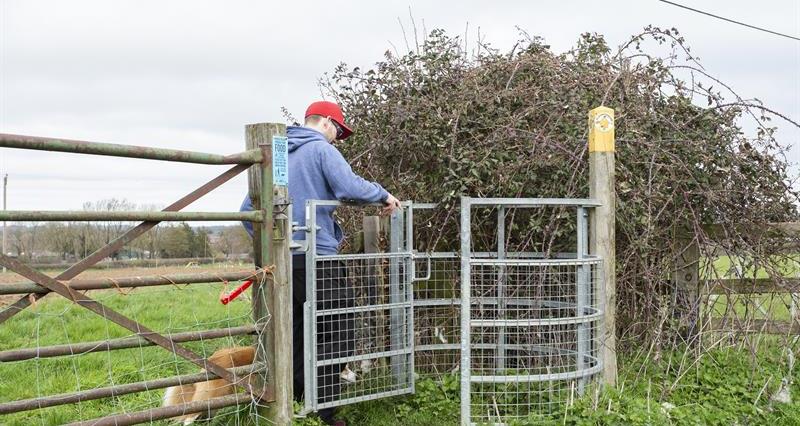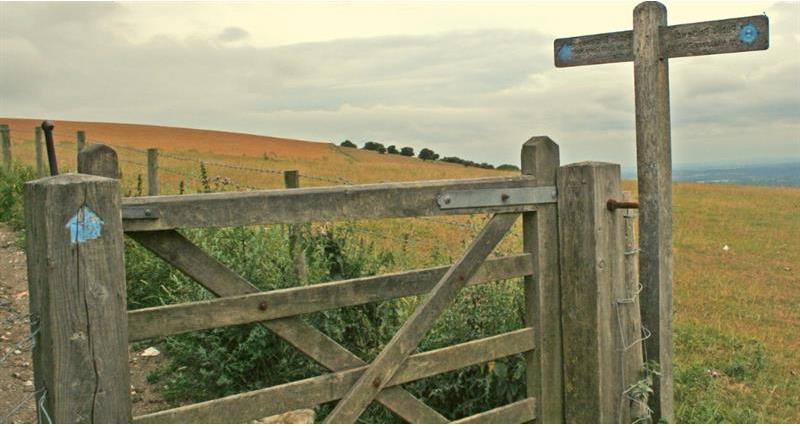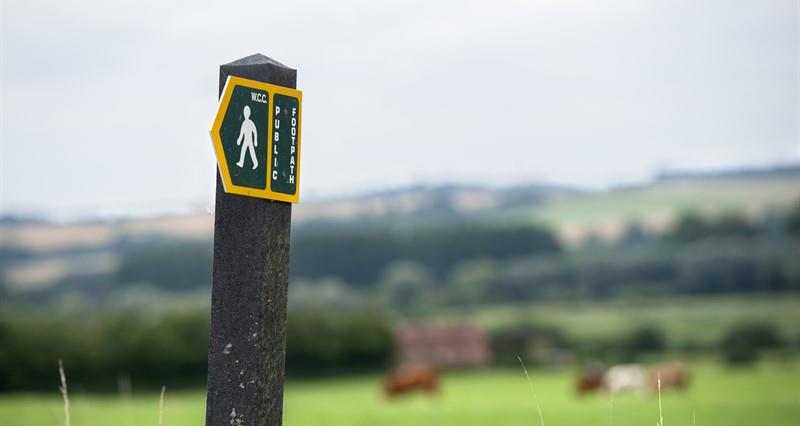If you are claiming BPS or funding under many agri-environment schemes, you are required to comply with the cross compliance rules on all the land that you farm.
A breach of cross compliance can lead to significant penalties being applied. Even if you are not claiming BPS or an agri-environment scheme, there is legislation under the Highways Act in place which covers rights of way on farmland, which must be complied with.
If you are uncertain if you have a public right of way on your land, your local authority will normally have a ’definitive map’ showing the public rights of way in your area.
Visit: What are the rules around public rights of way?
Cross compliance GAEC 7B: Public rights of way
GAEC 7b requires you to keep public rights of way (public footpaths, bridleways, restricted byways and byways open to all traffic) open and accessible.
You must meet the rules about:
- Not wilfully obstructing public rights of way without lawful authority or excuse e.g. locking gates, allowing overhanging vegetation, putting a fence across the route..
- Not disturbing the surface of public rights of way. If you have had to disturb the surface of a cross field path or bridleway, you must make it good.
- Maintaining stiles, gates and similar structures across a footpath or bridleway.
For cross compliance, these rules apply only to visible public rights of way. This means visible as a route to a person with normal eyesight walking or riding along it. This includes any rights of way that would be visible if the rules were being met.
More information on cross compliance rules can be found at: GOV.UK | Cross compliance 2023
Minimum widths
The minimum width requirements of rights of way (unless stated otherwise in the definitive statement held by the local authority) are set out below:
| Cross-field/other | Field-edge | |
| Footpath | 1 metre | 1.5 metres |
| Bridleway | 2 metres | 3 metres |
A public right of way must not be obstructed by crops where it is a cross-field public right of way.
Waymarking and warning signs
If official waymarking leaves it unclear where a public right of way goes, you may add informal waymarks to remedy this so long as these are not misleading.
You must indicate the route of a reinstated cross-field footpath or bridleway. If necessary, use signs to warn users of any dangers that are not obvious, such as slurry lagoons. Note that erecting misleading signs (such as signs about absent bulls) are an offence and local authorities have powers to remove them. Further information can be found on: GOV.UK | Public rights of way: landowner responsibilities
If you are uncertain on what your obligations are, please call NFU CallFirst on 0370 8458458.
More on public rights of way:



